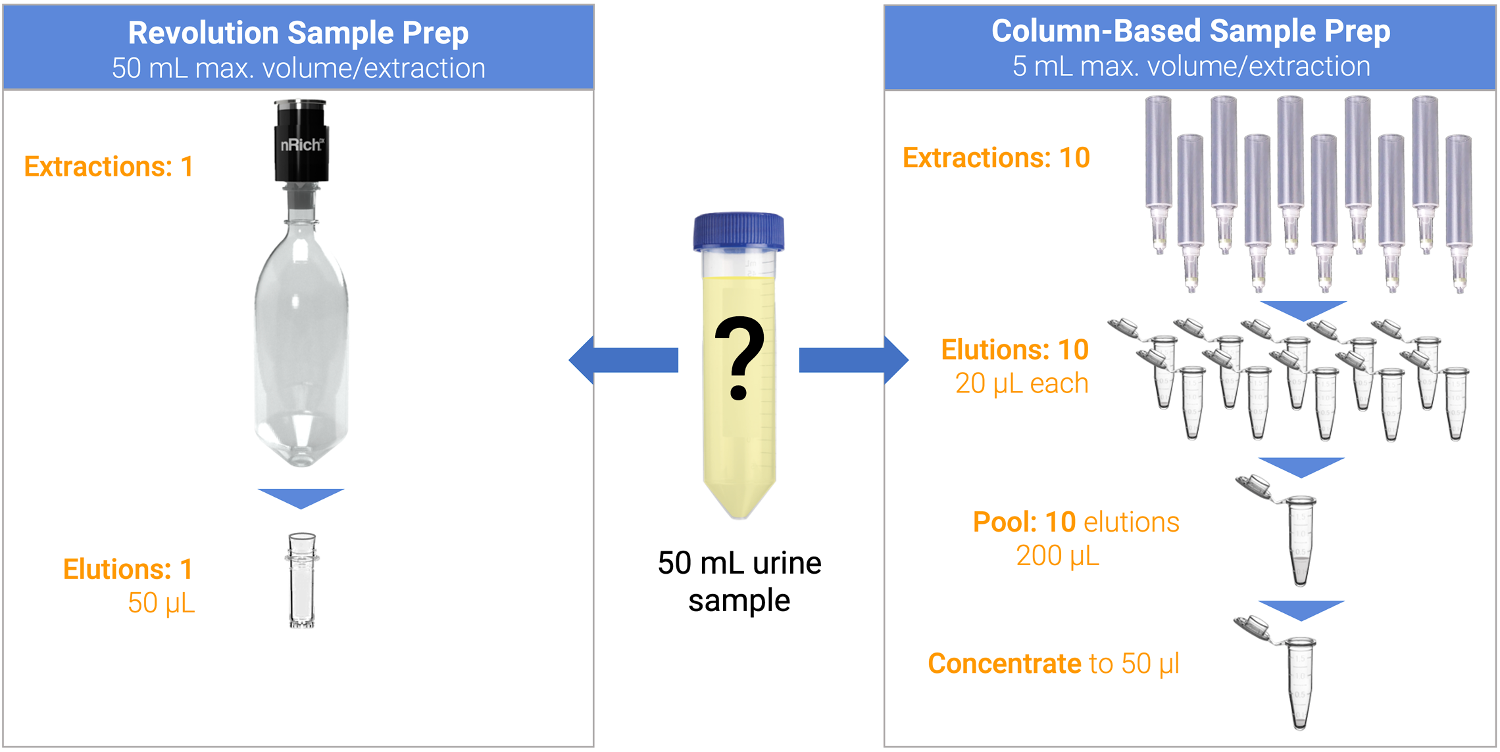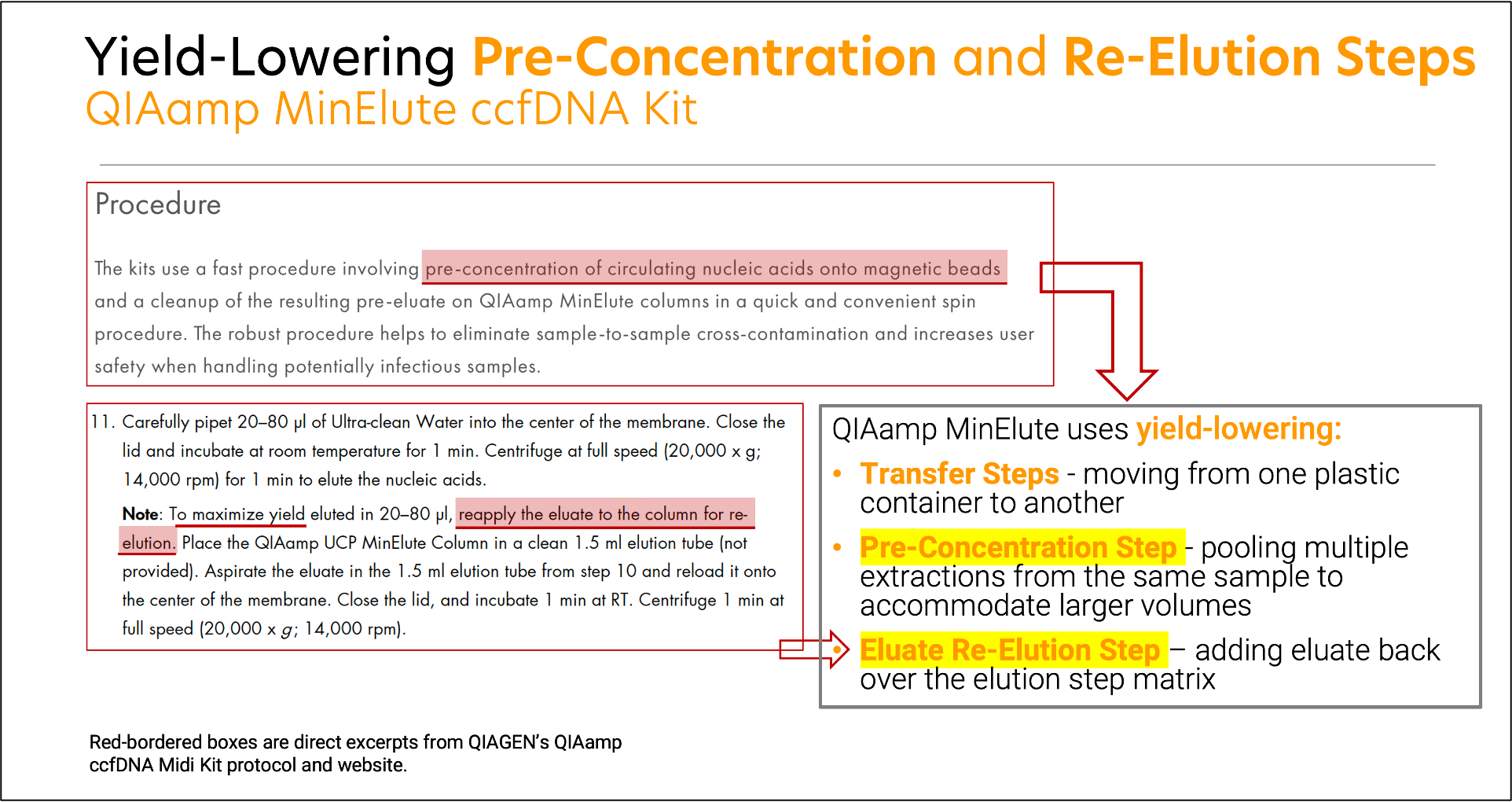Why Columns Aren't Suitable for Liquid Biopsy Sample Prep of Rare Analytes
Sample prep that eliminates yield-lowering limitations found in other methods:
- Limited Sample Volume - columns require successive manual loading in aliquots for volumes above the columns loading capacity and can carry a risk of column overloading
- Sample transfers - moving samples from one plasticware vessel/container to another
- Pre-extraction volume concentration steps - reducing larger sample volumes to a volume compatible with the method being used, or to concentrate low-concentration/higher volume samples
- Eluate re-elutions - reapplying the eluted sample back over the extraction matrix
- Eluate pooling for larger volumes - required for sample volumes exceeding the sample volume limit of the method used (e.g. often 5 mL - 10 mL depending on the specific method) necessitating extraction of the same sample in multiple separate extractions followed by pooling of the separate eluates (NOTE: eluate pooling may require an additional eluate concentration step depending on the input sample volume threshold for the analysis method used)
- Additional "Clean-up" steps may be required
- Tedious, labor-intensive workflow requiring careful attention throughout the protocol - little walk-away time with careful attention required throughout the protocol. Very difficult to scale.
Column-Based Methods Aren't Suited for Liquid Biopsy Extraction
The Problems with Columns are Compounded at Sample Volumes >5 mL
The Choice: an example for a 50 mL extraction. Must use column extenders (at added cost and plasticware per extraction)

Narrated Summary of Published Third-Party Evaluation
A laboratory at Johns Hopkins evaluated nRichDX's Revolution System and a popular column-base method (QIAamp) for extraction of liquid biopsy analytes (Click the video below)

Third-Party Data
This article compares the extraction of cell-free DNA (cfDNA) from plasma using two different kits: the paramagnetic bead-based nRichDX Revolution cfDNA Max 20 Kit and the column-based Qiagen QIAamp Circulating Nucleic Acid Kit. The authors reported that "paramagnetic bead-based cfDNA isolation [nRichDX] improved the recovery of cfDNA compared to the column-based [Qiagen] method... Across all metrics."
Clinical Chemistry (Journal) 2025 May 26; link to abstract: https://pubmed.ncbi.nlm.nih.gov/40415574/
cfRNA Extraction with Columns as Compared to the Revolution System
See the following poster presented at ASHG 2025 which compared cfRNA extraction across four different methods, including column-based methods and concluded the following: Extraction: MiRNeasy and QIAamp Plasma kit yield were below limits of detection. Zymo and nRichDX had measurable concentrations, with nRichDX 2-5x that of QIAamp. The nRichDX Revolution Plus System yielded more and higher-quality cfRNA, with measurable RIN values where other kits failed. This improved input enabled more sensitive detection of ALS-associated cryptic introns.
Ready for Sample Prep Engineered for Liquid Biopsy?
Did you know you can easily compare your existing method with Revolution Sample Prep using your samples?
You send us your samples, we run them in our laboratory using the Revolution Sample Prep System and send the eluates back to you for analysis. See the difference in performance for yourself with your own samples. For more information and to order, check out nRichDX's extraction service webpage.
*All trademarks are the property of their respective owners. Qiagen, QIAamp, MinElute, and QIAvac are trademarks owned by QIAGEN.


.png)

